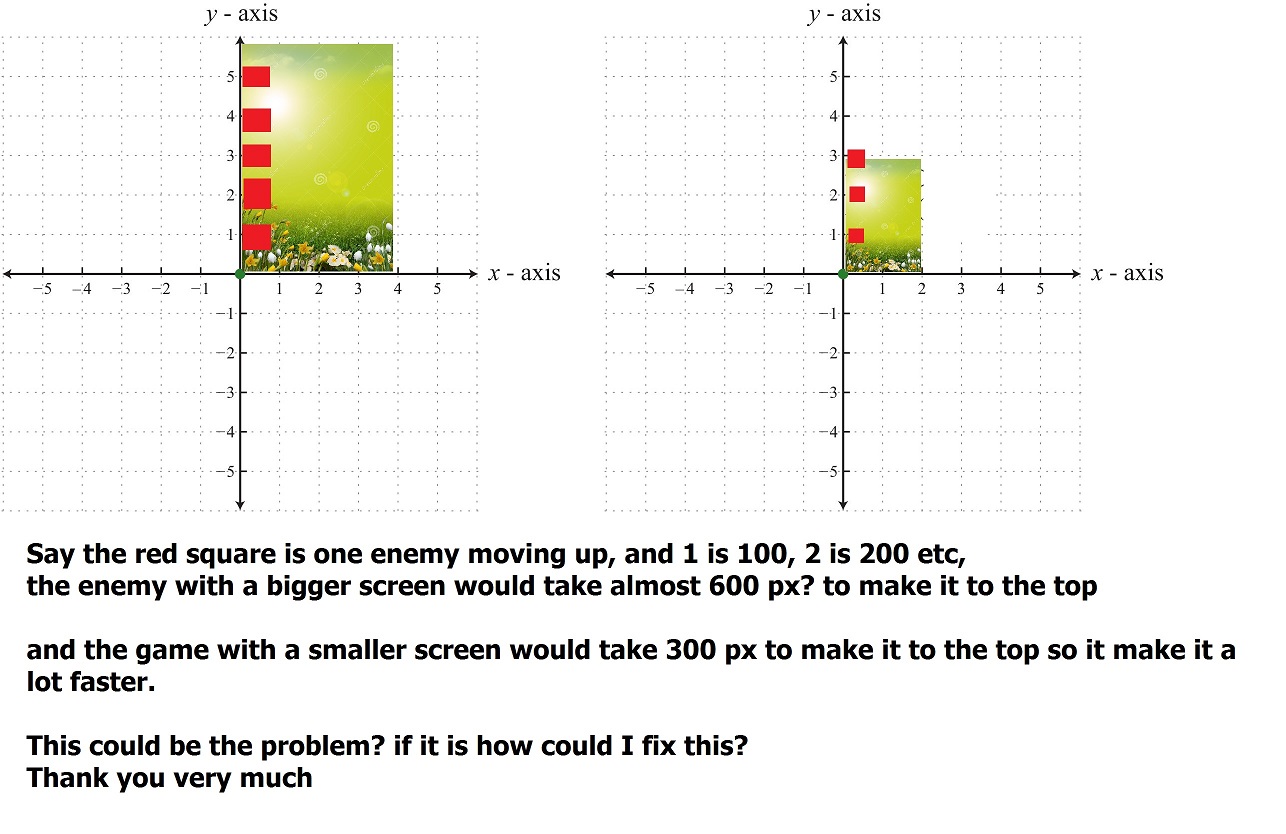Hello im a total noob in java, im learning game development, i made this game and when i thought i was finish i tested in another android with a smaller screen and puf all the game was ugly. I started rezing evrything by screen width, example
batch.draw(position.x, position.y,Gdx.graphics.getWidth()/7, Gdx.graphics.getWidth()/7 );
ive resized all textures and background and now it looks the same in both devices.
I feel this method to this is sketchy, already did it but in my futures games, is there a easier way to accomplish this ?
Also the speed of the enemy is moving faster in one devices, I did the speed times delta thing and still :/
Sorry for my bad english
Thank you very much

